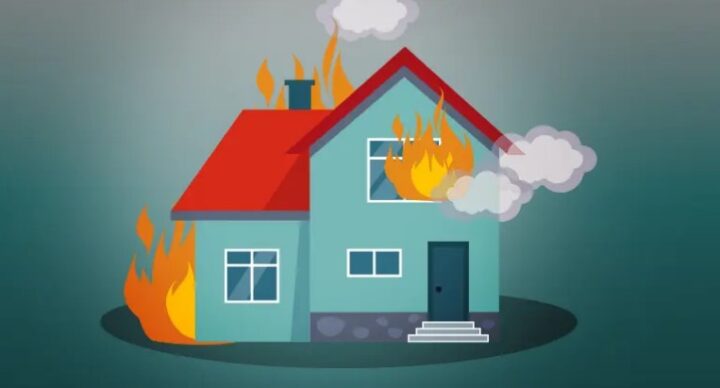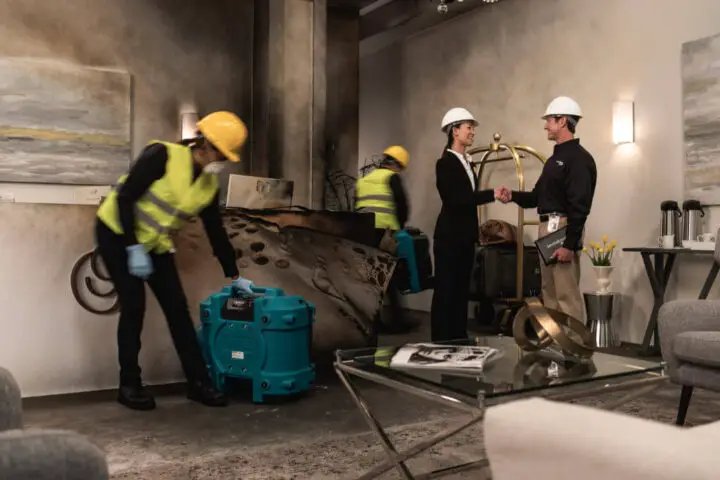
No one wants to be in the position where they have to file a fire insurance claim on their home and belongings. It is a significant and stressful undertaking, and the results can have long-lasting financial implications.
Should a fire happen in your home, your insurance policy is there to help you repair damage to your home and replace belongings lost to fire or smoke damage. A successful claim should provide the maximum amount of funds that you are entitled to receive according to the details of your policy.
This checklist is designed to guide you through the insurance claims process. Use it to make the process go smoothly and to make sure that you receive a fair offer.
1. Inform Your Insurer Immediately

One of the first things you need to do after there is a fire that affects your home is to let your insurance company know. You can call them or send them an email, but the important thing is that they know.
Delays in informing the insurance company could lead to them rejecting your claim, so do not wait. Fires usually cause enough damage that you will want to file one way or another.
You will still have to initiate a claim in writing, but informing the insurer should happen earlier than that.
2. Get Legal Help for Major Claims
The value of your claim can help you determine whether or not you need assistance from an insurance lawyer or a public insurance adjuster. Minor claims can usually be settled directly with your insurer unless there are problems or the claim is rejected. When it comes to major claims, there is a great deal of money at stake.
According to insurance lawyer Virani Law, the initial offer you get from the insurer may not include everything you are entitled to receive according to your insurance policy. Experienced negotiators with legal knowledge of insurance policies can help you negotiate a fair offer from the insurance company.
3. Take Photos of the Damage
Repairing after a fire can cost tens to hundreds of thousands of dollars, even if it’s put out before engulfing your entire home. The component of your insurance policy that pays to repair or rebuild your home can be one of the most valuable parts, and you should collect your own pictures or video footage of the damage done.
Once the fire department has informed you that it is safe to return to the site, take pictures of the interior and exterior. Focus on damaged structural elements. If there are parts of your home that have been lightly affected, document those as well, as these are the most likely to be disputed later in the process. You should also take photos of damaged belongings like furniture.
It is important to have your own documentation in case you disagree with the insurance adjuster about whether or not part of your home needs to be repaired. If you have to push to get appropriate coverage, it can help to have your own documentation to fall back on.
Credit: pch.vector via Freepik
4. Take Stock of Lost Belongings
Another major part of your insurance policy is contents. This part of the policy is used to reimburse you for restoring or replacing belongings that were damaged by fire, smoke, or firefighting efforts.
This part of your claim will require you to submit a document called a Proof of Loss. This document is a list of all of your belongings damaged by the fire. It is an extensive list that includes electronics, furniture, media, clothing, and more.
It can be a lot of work to create this list. Imagine listing every article of clothing, every gadget in your kitchen, or every tool in the garage that you lost in a fire. Some people keep a home inventory for this very reason. They have a relatively up-to-date list of everything they’ve purchased, just in case.
If you do not have a home inventory ready, you can start by looking up online receipts, credit card purchases, and even looking at photos taken inside your home. These can help you refresh your memory and avoid missing items. If an item is not on your final Schedule of Loss, the insurer will not compensate you for it.
5. Evaluate the Offer

After you have submitted all of your documents and the structure has been evaluated, the insurance adjuster responsible for your case will make a recommendation to the insurance company. The company will take the adjuster’s recommendation into consideration and give you, the policyholder, an offer.
This is not necessarily the final amount they are willing to provide, and it may be significantly lower than what you need or what you are entitled to in your policy. Claims are a business cost that they may be motivated to minimize, or they may have made a mistake processing your claim. That can be incredibly frustrating when your main goal is getting your life back.
Compare the offer to the details in your insurance policy. This is another area where an insurance lawyer can provide assistance.
6. Leave Cleaning to the Professionals

Cleaning up smoke and soot damage is a job that should be left to the professionals. Fire damage cleanup involves several complicated processes, including soot removal, ozone treatment to remove odors, and thermal fogging. While you may want to try to clean treasured belongings on your own, it can be hazardous and is not always successful.
You may need to discuss with your insurance company whether or not you even want to attempt to clean up belongings or restore structural elements that have soaked up smoke odors or soot damage. A failed restoration attempt can still take funds from your insurance, leaving you with less when you ultimately have to replace those belongings.
7. Track Your Living Expenses
One last but very useful thing you should do is keep track of your living expenses while your home is under repair. You can claim Additional Living Expenses, which are costs above and beyond your usual expenditure for things like food, transportation, storage, etc. Try using a receipt manager app and devoting a credit card just to expenses you plan on claiming.
These tips can help your fire insurance claim go more smoothly. Set yourself up for success and avoid potentially costly mistakes when you file an important claim.

